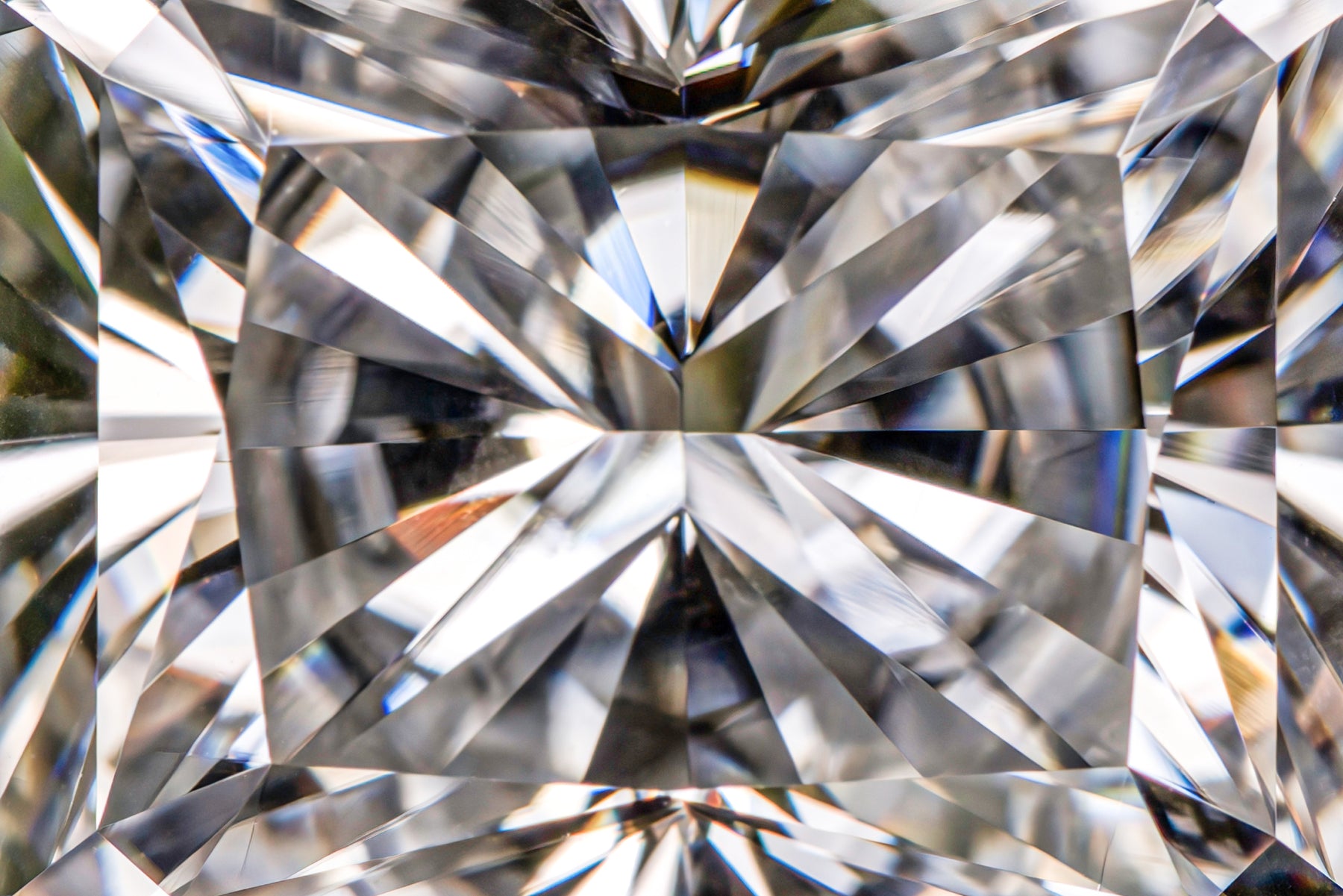
Diamond Clarity Guide & Chart
As you slide the diamond ring onto your finger – whether during a wedding, after accepting a proposal, or just to try one on – you’ll see it sparkle and shine. Every diamond sparkles - from lab grown diamonds to natural ones.
What makes one diamond sparkle and shine more than another is actually quite complex. It comes down to the 4Cs – a diamond’s colour, clarity, cut and carat.

Each of these plays it’s part in the beauty of your diamond – but the clarity of diamonds really can impact that level of eye-catching sparkle.
- A diamond’s grade is partly based on its clarity – its freedom from inclusions
- Clarity is one of the 4Cs of diamonds and impact the value of the diamonds
- The clarity of diamonds is measured on a scale with ‘flawless’ as the best clarity
What is clarity in diamond?

Clarity is how clean the interior and to a lesser extent, the exterior of the diamond is. In industry language, they refer to inclusions, imperfections and blemishes. Diamond clarity is measured on a scale. The fewer inclusions or blemishes, the higher the diamond clarity grade.
What are diamond inclusions?
Inclusions are microscopic characteristics that can be found inside or on the surface of the stone. Usually, they are so small that you can’t see them with the naked eye. But even so, they can impact the price of a diamond considerably.
What is best clarity for a diamond?
A Flawless rating for a diamond is the best clarity diamond grade in the UK. This means there are no inclusions or blemishes.
Flawless diamonds are extremely rare. The diamond clarity scale runs from ‘Included’, which contain obvious inclusions that can be easily seen at 10x magnification, up to Flawless.
Lab grown diamonds and clarity
While inclusions are formed naturally when diamonds are created under huge pressure, they are also formed during the lab grown diamond process. No matter how lab grown diamonds are formed, they can get inclusions.
How is a diamond’s clarity grade is determined?
Clarity isn’t just about the number of inclusions. It also covers how big they are, where they are, how bright they are and the type of inclusion.
- Number – The fewer inclusions or blemishes in a diamond, the better grade it gets.
- Size – Larger inclusions in diamonds reduce clarity. These are graded in relation to the size of the stone.
- Position – If a blemish or inclusion is closer to the centre of the diamond, it can have a greater negative impact on clarity.
- Brightness – The brighter the inclusion in the diamond, the more likely it is to impact the sparkle and reduce the quality.
- Type – There are two types – inclusions, which are internal characteristics and include pinpoints, feathers, crystals, and blemishes, which are surface only and include grain lines, naturals or scratches.
Clarity of diamond chart in UK
The clarity in diamonds is measured on a scale that notes the size and number of inclusions from 'none' to 'clear and obvious' blemishes. Those at the top of the diamond clarity chart tend to be the most valuable, while those at the bottom of the scale are the most affordable.
The diamond clarity scale in the UK is based on how obvious the inclusions are under 10x magnification.
BEST CLARITY DIAMONDS
- Flawless (FL): The best diamond clarity is called Flawless – even under 10x magnification shows no inclusions or blemishes.
- Internally Flawless (IF): Shows no inclusions and only insignificant blemishes.
- Very, Very Slightly Included 1 (VVS1): The VVSI rating means inclusions are extremely difficult to see for an experienced grader under 10x magnification.
- Very, Very Slightly Included 2 (VVS2): VVS2 means that inclusions are very difficult to see for an experienced grader under the 10x magnification.
- Very Slightly Included 1 (VS1): Minor inclusions that are difficult to see under 10x magnification.
- Very Slightly Included 2 (VS2): Minor inclusions that are somewhat difficult to see under 10x magnification.
- Slightly Included 1 (SI1): Noticeable inclusions under 10x magnification.
- Slightly Included 2 (SI2): Noticeable inclusions that under 10x magnification are very easy to see.
- Included (I1, I2, and I3): Obvious inclusions under 10x magnification.
LOWEST CLARITY DIAMONDS
What are P1, P2, P3 clarity diamonds?
Sometimes, people refer to clarities of P1, P2, and P3 in diamonds. These are just other ways of referring to I1, I2, I3. The P in 'P1 diamond clarity' stands for Piqué.
How does diamond clarity affect price and value?
Diamonds with high clarity grades are rare. The higher the diamond clarity, the rarer it is. Their rarity means that diamonds with higher clarity grades are more expensive.
The best clarity diamonds - those with a flawless (FL) clarity grade - are the rarest and the most expensive.
Summary
Diamond clarity is a mark of how perfect your diamond is. It can contribute to its sparkle and value. It is measured by looking at any flaws – called inclusions on blemishes. A Flawless diamond has no inclusions or blemishes, so is classed as having the highest grade of clarity.
Talk to us about choosing the right diamond for you, or browse the full range of products to choose the ideal ring. You can find the clarity details in the ‘Lab Grown Diamond Information’ section of our products.
